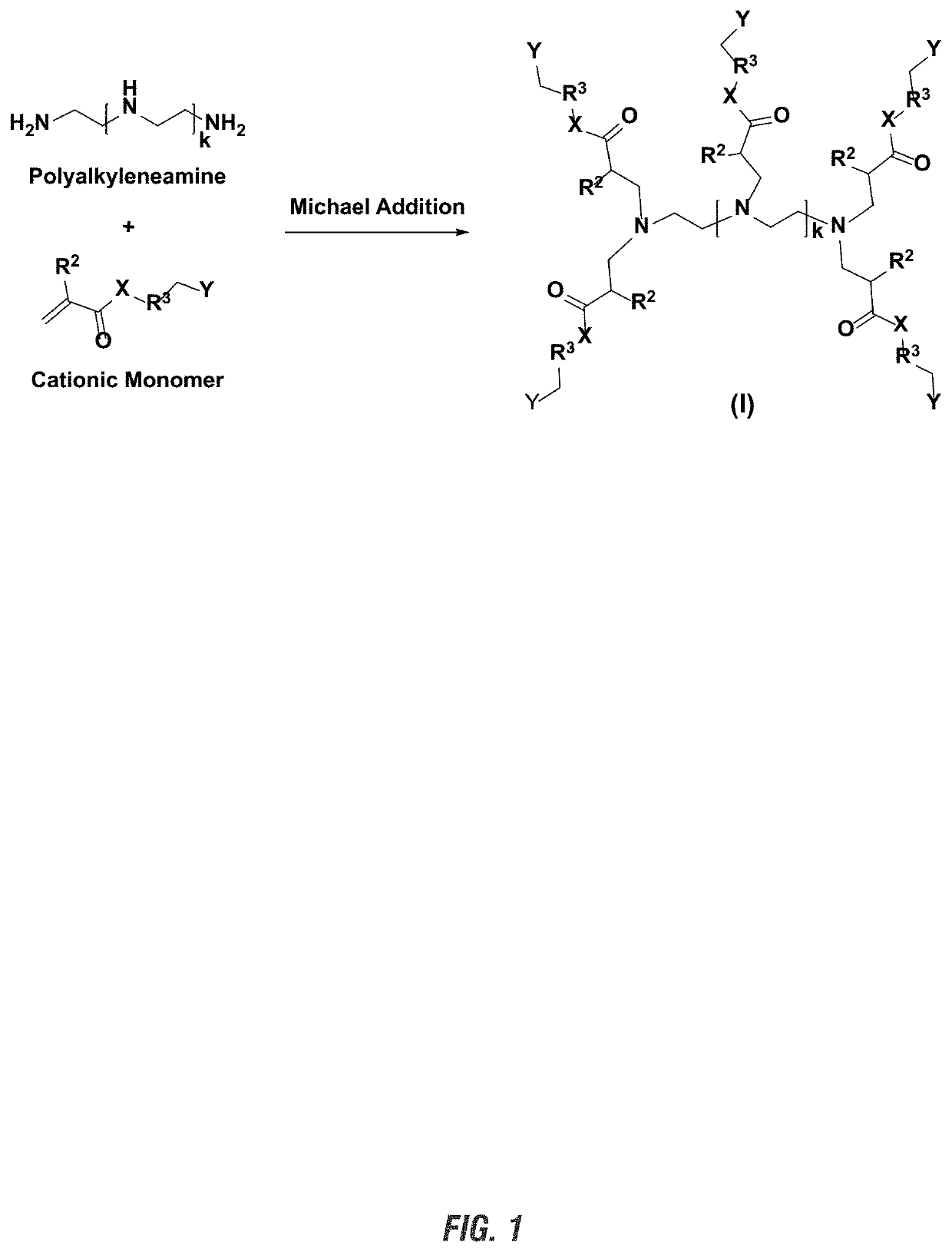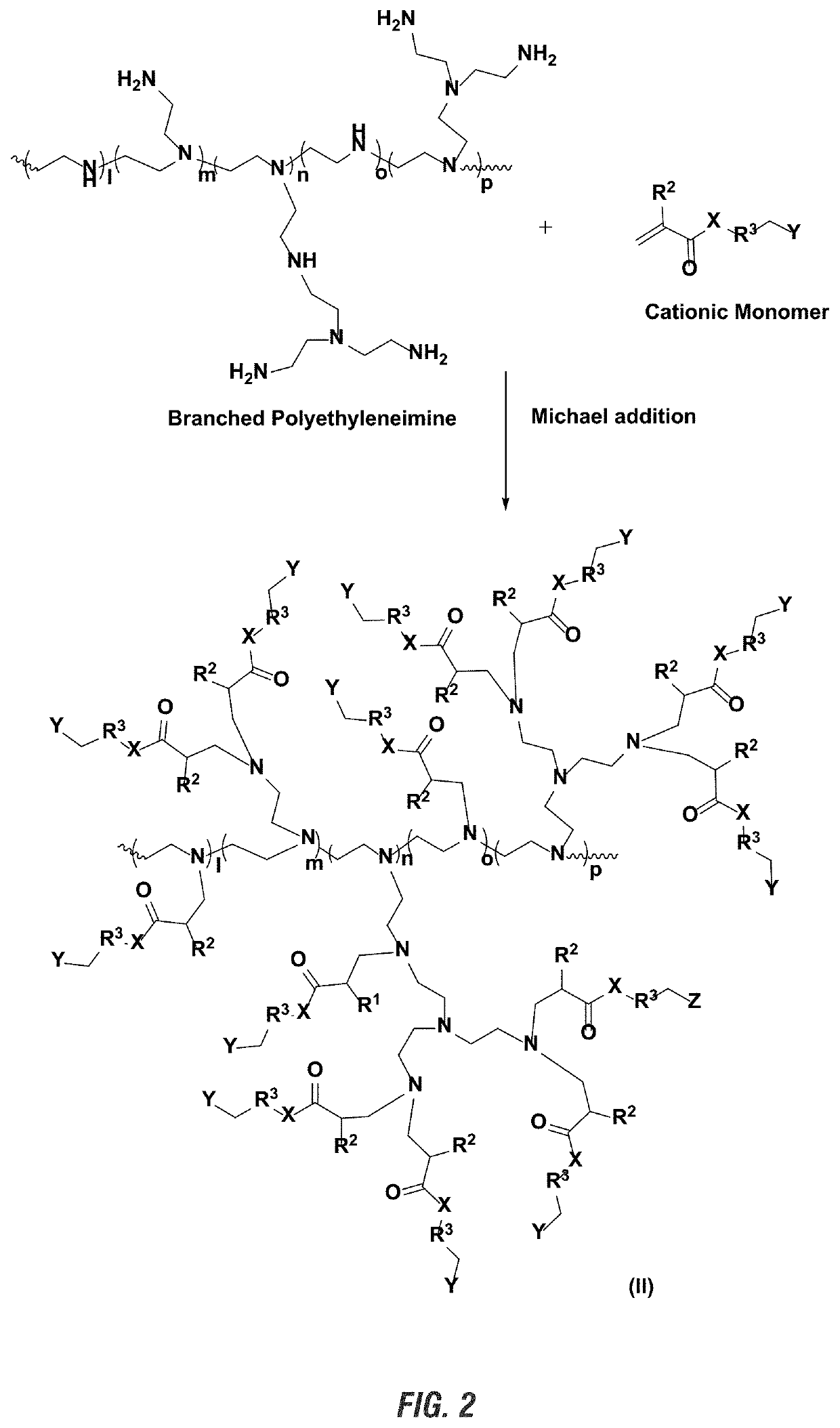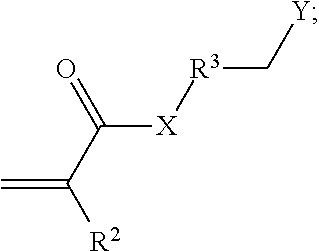Use of multiple charged cationic compounds derived from polyamines for clay stabilization in oil and gas operations
a technology of polyamines and cationic compounds, applied in the direction of sealing/packing, chemistry apparatus and processes, wellbore/well accessories, etc., can solve the problems of not being able to solve every kind of subterranean formation, being difficult to exchange out, and being difficult to achieve the effect of reducing clay swelling, clay migration, and sludge formation
- Summary
- Abstract
- Description
- Claims
- Application Information
AI Technical Summary
Benefits of technology
Problems solved by technology
Method used
Image
Examples
example 1
Synthesis of Multiple Charged Cationic Compound 1
[0263](3-Acrylamidopropyl) trimethylammonium chloride (APTAC, 75%, 199 grams) and water (20 grams) were charged into a 250-mL three-necked RBF equipped with magnetic stir bar, temperature probe, and condenser. Ethylenediamine (EDA, 99%, 11 grams) was then added to the well-stirred reaction mixture at room temperature. Reaction temperature was raised to 80° C. and stirred overnight or until the >98% consumption of APTAC. The progression of reaction was monitored by ESI-MS and / or NMR spectroscopy for consumption of the monomer. The resulting aqueous solution of Compound 1 was used as-is for its application as clay stabilization agent.
example 2
Synthesis of Multiple Charged Cationic Compound 2
[0264](3-Acrylamidopropyl) trimethylammonium chloride (APTAC, 75%, 130 grams) and water (20 grams) were charged into a 250-mL three-necked RBF equipped with magnetic stir bar, temperature probe, and condenser. Diethylenetriamine (DETA, 10 grams) was then added to the well-stirred reaction mixture at room temperature. Reaction temperature was raised to 80° C. and stirred overnight or until the >98% consumption of APTAC. The resulting aqueous solution of Compound 2 was used as-is for application testing.
example 3
Synthesis of Multiple Charged Cationic Compound 3
[0265](3-Acrylamidopropyl) trimethylammonium chloride (APTAC, 75%, 70 grams) and water (20 grams) were charged into a 250-mL three-necked RBF equipped with magnetic stir bar, temperature probe, and condenser. Pentaethylenehexamine (PEHA, 10 grams, 99%) was then added to the well-stirred reaction mixture at room temperature. Reaction temperature was raised to 80° C. and stirred overnight or until the >98% consumption of APTAC. The resulting aqueous solution of Compound 3 was used as-is for application testing.
PUM
| Property | Measurement | Unit |
|---|---|---|
| molecular weight | aaaaa | aaaaa |
| Mw | aaaaa | aaaaa |
| average molecular weight | aaaaa | aaaaa |
Abstract
Description
Claims
Application Information
 Login to View More
Login to View More - R&D
- Intellectual Property
- Life Sciences
- Materials
- Tech Scout
- Unparalleled Data Quality
- Higher Quality Content
- 60% Fewer Hallucinations
Browse by: Latest US Patents, China's latest patents, Technical Efficacy Thesaurus, Application Domain, Technology Topic, Popular Technical Reports.
© 2025 PatSnap. All rights reserved.Legal|Privacy policy|Modern Slavery Act Transparency Statement|Sitemap|About US| Contact US: help@patsnap.com



